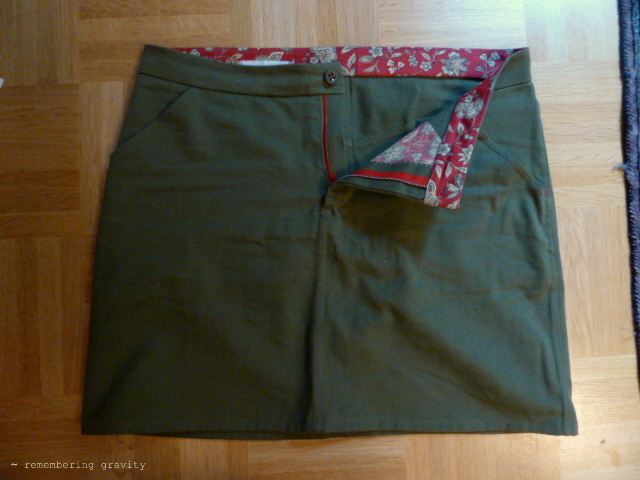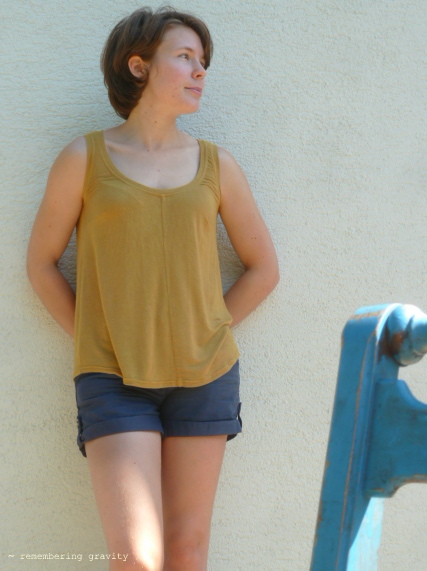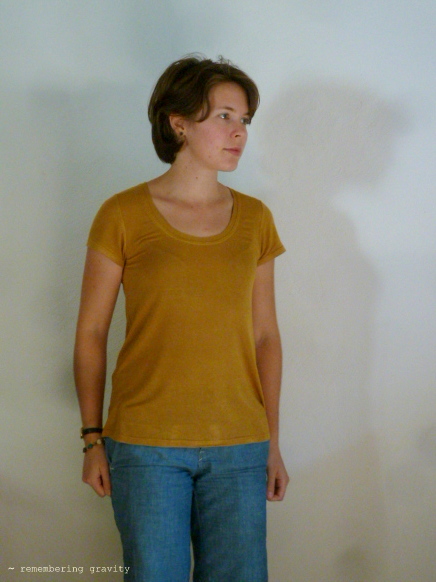Here’s a jumper I knitted. The Offshore V-Neck by Bristol Ivy:

I picked up a bag of lovely Debbie Bliss Donegal Tweed in a Brocki for pretty cheap, and started looking for a project. Since my last big knitting projects had been all about colourwork (Aftur and Bláithín), I wanted a bit of the other one: cables. I loved the Offshore jumper as soon as I saw it and dived straight in.
This was all nearly two years ago. The process was a bit of a slog due partly to my own indecision and mistakes, and partly to the confusingly-written pattern.
I started in the smallest size, and after I’d knitted the bottom ribbing and a fair chunk of the cable pattern I realised it was going to be too small, so I ripped it all back and started in the next size up. I hate the idea of knitting something and it being unwearable.
I also made a few mistakes in the increasing and decreasing along the way. In the past would have left some of these in, thinking it added to the charm of a hand-made piece, but these days I’d rather put in a bit of extra time and do it properly (it’s one of the things about me that winds my boss up).
Here are some pictures of the jumper before the nitty-gritty:
So, the pattern problems. I’ve put these on my Ravelry as well, but for anyone who doesn’t have an account / can’t be bothered to click through / isn’t that interested in knitting pattern notes but will read them anyway if they’re there, here they are.
- Other knitters have noted that the yoke, as written, is far too small and therefore the armholes and neckhole are very tight. As other knitters did, I added depth to the yoke by stopping a number of rows early, as if for two sizes above the one I was knitting, and spacing out the raglan decreases correspondingly.
- Something that it would have been nice to mention in the pattern is that it is VERY IMPORTANT that the body and sleeves are both stopped on an odd-numbered row of the cable chart, bound off on an even-numbered row and then joined on an odd-numbered row. Otherwise you will find yourself trying to cable from the wrong side.
- The “at the same time” section of the pattern is complicated, and even more so if you’re trying to re-write it to make the yoke deeper. I drew out a chart to help me keep track of the neckline decreases and raglan decreases as well as the stitch counts for front, back and sleeves. Here is my chart:

- It’s also VERY IMPORTANT that when you get to the end of the neckline shaping you have 25 stitches left for each sleeve so that the saddle section works.
- I added an extra 5 rows at the end of the neck cable chart to increase the size of the neck hole. I should have added an even number, because I ended up with my cable row on the wrong side for the saddle. This was manageable, but annoying, and a silly mistake to make.
- There are 2 major actual mistakes that I can remember in the pattern:
One is on the cable A chart, there should be a purl stitch at the end of the chart (before you go back to stockinette stitch).
The other is in the right saddle decrease instructions. They should read:
Row 1: Work 24, p2tog, turn.
Row 2: sl1, work 23, ssk, turn.
Row 3: sl1, work 23, p3tog, turn.
Row 4: sl1, work 23, sssk, turn. - The pattern says to pick up 67 stitches around the neck. I’d increased the size of the neckline so I picked up 83: 18 for the back, 13 along the vertical of each saddle, 19 down each side of the front and 1 at the centre front. I picked the stitches up in the 2×2 rib instead of just straight.
I don’t want to put anyone off knitting this pattern. It’s really lovely and I’ve been wearing it almost daily ever since I finished it. It just needs a bit more thinking through than other patterns.
On my version, the beautiful cable pattern gets a bit lost in the tweedy wool, so I’d probably recommend knitting it in something a bit simpler, but I also don’t turn down cheap, good quality wool from a second-hand shop, so I can’t complain.



































